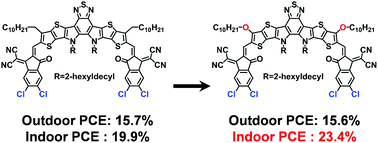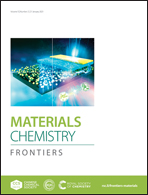Organic photovoltaic cells with high efficiencies for both indoor and outdoor applications†
Abstract
Organic photovoltaic (OPV) cells have highly tunable light-response ranges, enabling them to achieve high power conversion efficiencies (PCEs) in various scenarios. Until now, most studies of these devices have focused on developing highly efficient OPV cells under the standard AM 1.5G solar radiation. However, light harvesting under indoor lighting conditions is also important, and OPV cells have successfully demonstrated their potential for indoor power generation. To meet the requirements of the rapid development of the Internet of Things (IoT), it is very important to develop highly efficient OPV cells for both indoor and outdoor applications. Here, we report the design and synthesis of a non-fullerene acceptor HDO-4Cl, which has a well-matched absorption spectrum for both solar and indoor-light radiation spectra. As a result, these OPV cells based on PBDB-TF:HDO-4Cl yield a good PCE of 15.5% under AM 1.5G solar illumination and an impressive PCE of 23.4% under light-emitting dioxide illumination at 1000 lux. Our results suggest that OPV cells have great potential for use in various application scenarios.



 Please wait while we load your content...
Please wait while we load your content...